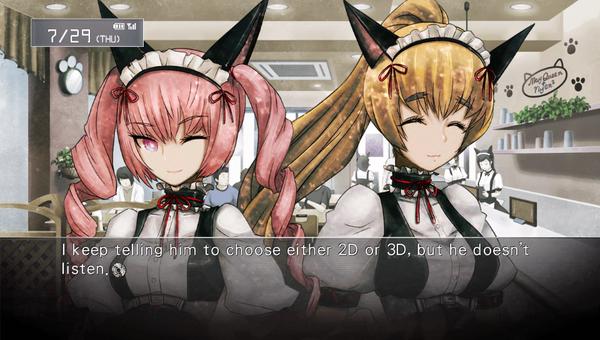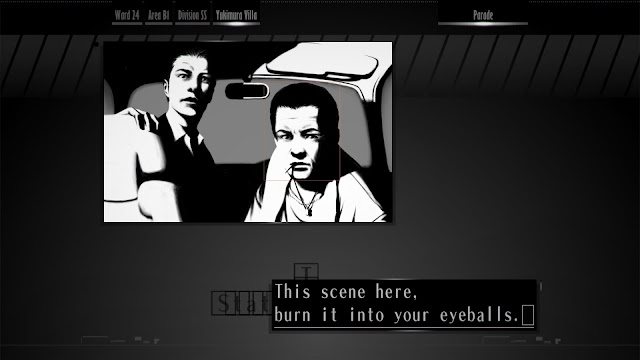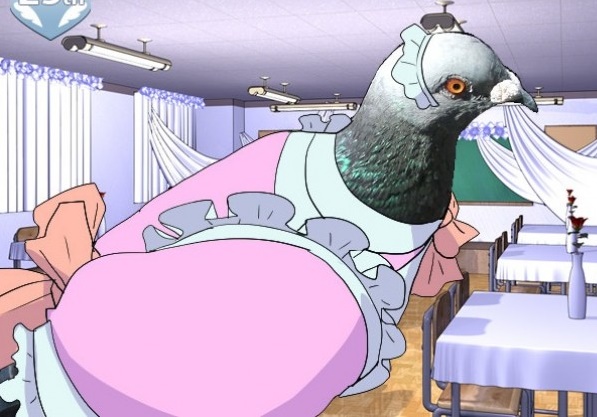List by Matt S.
There are people that don’t consider visual novels to be games, and therefore are not worth talking about or playing. Those people are a little silly, because regardless of whether you consider visual novels to be a game, or something else entirely, a good one is absolutely worth talking about and playing.
The characteristics of a good visual novel has nothing to do with how they play, though some of them certainly offer some good combat systems to go with the storytelling. No, it’s the narrative, characters and writing that make for a good visual novel.
It’s a relatively new genre out here in the west. Until a couple of years ago, the number of visual novels that were actually localised into English were few and far between. The rise of digital download platforms has made localisation of niche games a less risky proposition, however, so we’re now seeing more and more of them.
As a new genre, however, it can be difficult to figure out just where to start if you’ve had limited experience with visual novels in the past. So this week for our Friday Ten we’re listing the ten most essential visual novels that will help genre newbies get as hooked on them as we are.
Note: We’ve restricted the list to games that are available in English, for obvious reasons, given the context of this list. There are so many Japanese visual novels that we would have just loved to include on the list. Sadly Konami never decided to localise its Love Plus games, so the best visual novel franchise of all (among others) is not on the list.
Steins;Gate is on one level a hardcore visual novel. Where you might generally recommend a visual novel that features some more interactive segments to help ease players into the genre, Steins;Gate has none of that. Aside from some very limited ability to read messages on a phone (or not), and respond to them, there’s not much else to do in this one than read. It’s so easy to recommend, however, because it is just so well written. People who go into it with an open mind will forget completely about the lack of interactivity about an hour in, because they’ll be hooked on this like the very best of books.
Hakuoki: Stories of the Shinsengumi
As with Steins;Gate, this is quite the straightforward visual novel, with limited interactivity. As with Steins;Gate, it offers such a wonderful narrative that the lack of “gameplay” doesn’t matter in the slightest. In Hakuoki you’re following a story about a real Japanese group of warriors, the Shinsengumi, as they get up to all kinds of magical exploits and daring-doo. Think that 47 Ronin film, only good. This is also one of the best examples of an Otome game – a dating game in which you play as a woman with a number of different male love interests to choose between. It’s fascinating seeing the differences in tone and style between a game like this, and those harem dating games designed for the boys.
Danganronpa: Trigger Happy Havoc
Danganronpa is one of our very top games of all time for a really good reason; it tells one of the most intelligent and meaningful narratives ever – and I don’t just mean in terms of games. Don’t be fooled by the “weird Japan” presence of Monokuma, or the occasionally fanservicey character designs. Danganronpa is a very serious exploration of game theory, morality, and plenty of philosophy besides underneath that surface. With plenty of humour and a mystery story that offers plenty of twists and turns, Danganronpa is essential, whether you plan on playing another visual novel or not.
Virtue’s Last Reward
Thematically, Virtue’s Last Reward is the lesser cousin to Danganronpa. It covers the same basic narrative plot points of the other game, especially in the way it explores the Prisoner’s Dilemma and the moral implications of that. But this one might just be more palatable to visual novel newcomers. See, Virtue’s Last Reward features a lot of puzzle room action, and these are intense, creative, and will give the brain a real workout, beyond its capacity to read. As a “gateway drug” to visual novels, it’s difficult to look past this one.
With its grungy rock vibe, Tokyo Twilight is immediately appealing, and while it has a RPG combat system that takes some getting used to (you’re fighting battles by moving pieces around a bit of grid paper like it’s an old parlour game), once you get a hang of it, the game’s other strengths really come to the fore; incredible art design, excellent characterisation, and a fun Ghost Busters-meets-school-drama plot line.
Imagine Fire Emblem, but with a far, far more extensive plot between battle sequences. This is basically what Tears to Tiara II offers. As in Fire Emblem you’ll start out with a tiny force, squaring off against a powerful evil empire. But as you win battles, that force will grow. Meanwhile, there’s romance sub-plots, plenty of humour, and some really, really good tactics action sitting underneath there. Most people who might be interested in this kind of game are already comfortable with the structure because of Fire Emblem, so it’s another handy “gateway drug” to full-blown visual novels.
Saya No Uta
There are a lot of adult visual novels out there. Many of them are indeed terrible, aside from the nudity and the sex. We’re including Saya No Uta in this list because it’s an adult visual novel that just happens to be utterly brilliant as well. A deeply disturbing, horrific, extreme narrative, Saya No Uta will make you uncomfortable, and should make you uncomfortable, but in the style of the great transgressive artists from the Marquis De Sade through to Salvador Dali, the imagery of the game, and it’s ability to shake you to your core, is something that is worth experiencing. If games are art, and by extension visual novels are art, then this is one particularly good proof of that.
Cherry High Comedy Club is a light-hearted introduction to one of the most common gameplay structures in visual novels. As you play, you’ll have competing demands over a limited amount of time, so you’ll need to “train” your character in such a way that she turns out to be good at the things you want her to be good at, while dealing with the consequences of her not being good in other areas. Because this is a fairly low-pressure example of the genre, it’s a good place to go to get a feel for the style before testing yourself on the more involved character simulators.
The Silver Case is an excellent introduction to visual novels because it taps into a genre that most of us know well and love. From the Big Sleep through to Chinatown and on to L.A. Confidential, most of us know how noir hardboiled detective stories work, and with The Silver Case playing entirely to that genre, the familiarity makes the game immediately accessible and interesting. Noir detective stories are also exciting and intense, which will help mitigate the feeling that some might have that there’s not much activity in a visual novel.
This one’s an odd one, because it’s quite self-referential. It’s a dating game in which the (normally) human characters have been replaced with birds, and yes, the story is every bit as oddball as you might expect for a “pigeon dating game.” While newcomers will lose some of the humour when the game pokes fun at the visual novel genre, for much of the narrative, the humour is so surreal that everyone should enjoy most of the jokes on that level. And the game does take some oddly dark turns in places, which is as good of a way to introduce genre newbies to the visual novel’s love of a twist as any.
Now it’s your turn! Be sure to tell us what your favourite visual novels are, and recommend other titles to the newbies!
– Matt S.
Editor-in-Chief
Find me on Twitter: @digitallydownld

















